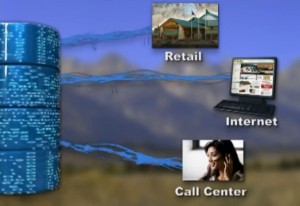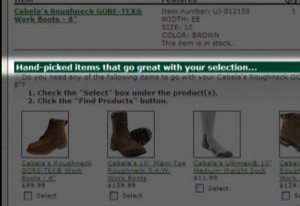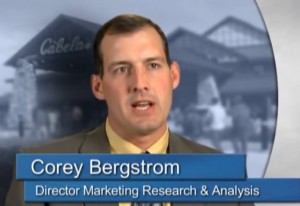If you like hunting, fishing, hiking or camping, chances are you not only know Cabela's but you're also a customer. Cabela's is one of the most well-known outdoor recreation brands in the world and was founded as a direct retailer in 1961.
 Cabela's now engages with customers across all 50 U.S states and in 125 countries around the world.
Cabela's now engages with customers across all 50 U.S states and in 125 countries around the world.
In addition to their traditional catalog business and online store, they operate 29 retail stores that have become destinations because they are so distinctive with cavernous interior spaces, aquariums and other unique features.
Each year, they distribute over 120 million catalogs in 100 different varieties targeted to specific customer profiles, all while successfully meeting their goal of offering a wide and distinctive selection of high-quality outdoor products at competitive prices while providing superior customer service.
 So how do they do it? Cabela's centralizes customer data in a data warehouse and uses SAS Analytics to segment and target their marketing efforts across all channels.
So how do they do it? Cabela's centralizes customer data in a data warehouse and uses SAS Analytics to segment and target their marketing efforts across all channels.
SAS in-database processing then streamlines analytical exploration and optimizes the performance of their intelligence framework, with improvements that include processing for a campaign that used to take 3-7 days now being performed in an hour.
 Their response rates and average order size have also increased using analytics.
Their response rates and average order size have also increased using analytics.
In their online store, they're able to improve the customer experience by using analytics. Once customers make a selection, they are able to offer "Y-MAN," or "you may also need" to suggest other products. By using analytics to predict the propensities behind Y-MAN, they've been able to increase the performance of that process by 300%.
 We've been able to capture some good insights from Corey Bergstrom, Cabela's Director of Marketing Research & Analysis in a 5-minute video on YouTube.
We've been able to capture some good insights from Corey Bergstrom, Cabela's Director of Marketing Research & Analysis in a 5-minute video on YouTube.
Check it out and hear directly from him how Cabela's masters multiple channels with analytics. Let us know what you think.

2 Comments
Thank you for your blog! However can you please explain the KPIs they were using to measure the effectiveness of the model. And what is the specific actionables they derived out of the servey for each customer groups?
Hi Asudipta,
I checked the video and it looks like their baseline is past purchase patterns and the metrics are response rates, average order and revenue per catalog. For their YMAN program, they're using product affinity and ROI based on sales. I hope that helps.
Thanks for your comment and thanks for following!
JB